al-Mawt Scorpion
This is a small but potent scorpion found throughout the Shamsi and Arabiyyah Deserts. Its rare to see them during the day, nocturnal by nature and often buried deep underneath the sand. They have small pincers compared to other scorpions but their venom more than compensates—its the deadliest scorpion sting in Emynea! These tiny invertebrates move freely through the sand thanks to their kaithur, unimpeded and highly mobile. Hiding just below the surface, al-mawt only emerge when it senses vibrations overhead! This also aids them in evading their own predators. Yet what al-mawt are most infamous for is their venom, an already potent mix of neurotoxins laced ionizing radiation—a sought after commodity for assassins. This is because of its effectiveness even to those immune to poison.
|
Anatomy |
Despite their deadly venom, al-mawt scorpions are very small. They have eight legs, a hard chitinous carapace and it's body is split into two main parts, the cephalothorax (fused head and thorax) and the opisthosoma (abdomen). Most of its sensory organs, legs and its pincers attach to its cephalothorax while its tail is connected to its opisthosoma. Meanwhile its stinger is found at the end of its tail, fed its infamous toxins by the venom bulb just below. A scorpion's mouthparts are called chelicerae, sharp and claw like. These pull apart the flesh of its victims, bit by tiny bit. |
Original Ancestor | Lifespan |
|---|---|
Leiurus quinquestriatus
Deathstalker Scorpion |
25 years |
Length | Weight |
1-3 in
30-77 mm |
3 grams |
Coloration |
|---|
Their normal form is mainly yellow and somewhat translucent but their stinger is black. In their magic form, their carapace takes on a sandpaper like texture and their legs resemble glass. Their stinger also changes from black to stark white, their milky venom gleaming like sunlight! |
Venom |
Al-mawt are among the most venomous scorpions of their kind, producing powerful neurotoxins and a lethal radioactive sting. Anti-venoms aren't very effective agains this toxin but even those fortunate enough to survive are in for a terrible experience! Their venom is a mix of the neurotoxins chlorotoxin, charybdotoxin, scyllatoxin and two agitoxins and a compoumd called Lq2. Because of its complexity, effects are wide ranging and unpleasant. The sting itself is extremely painful and symptoms set in quickly. These mainly affect the heart, lungs and digestion. Yet what a victim will undoubtably notice the most is the full paralysis of their body! This is because Lq2 causes all of a victim's muscles to contract! Lq2 blocks chloride channels in muscles which is how our body signals muscles to relax. Victims are totally unable to untense their muscles, continuously frozen but fully conscious. Death usually occurs from fluid in the lungs or heart failure but worst of all, all of this occurs alongside radiation poisoning which causes much longer lasting symptoms!
Because a large dose of radiation is injected directly into the victim's blood stream, radiation poisoning or ARS (acute radiation sickness) is quick to set in. These symptoms are less predictable than the venom, some starting immediately while others are belated. Intense nausea, fatigue and headaches are among the earliest symptoms but because radiation degrades the cells of a victom, damaging their DNA itself, cells which divide most rapidly are affected first. Most victims die from infection but internal bleeding, dehydration and confusion continue to develop long after the initial sting. Gastrointestinal and neurovascular radiation poisoning occur the fastest, the latter affecting bone marrow. If a victim manages to survive the initial sting and radiation poisoning, they aren't entirely safe! Belated effects include seizures, cancer, an impaired immune system, aplastic anemia, gastrointestinal syndrome, hematopoietic syndrome and neurovacular syndrome, killing victims long after the encounter. |
Effects of Venom | elevated heart rate, convulsions, fever, coma, hypotension, numbness, paralysis, lethargy, confusion, agitation, unconsciousness, myocardial damage, arrythmia, hypertension, pulmonary edema |
|---|---|
Effects of Radiation | nausea, headaches, fatigue, fever, vomiting, appetite loss, infection, internal bleeding, dehydration, confusion, seizures, thyroid cancer, lung cancer, scarring of lung tissue, GI tract bleeding, impaired immune system, hematopoietic syndrome, aplastic anemia, gastrointestinal syndrome, neurovascular syndrome, purpura (bleeding under skin), hemorrhages, alopecia, ataxia, electrolyte imbalance |
Senses |
While this scorpion has a lot of eyes, their vision is poor and most sensitive to light. Rather than relying on sight, hairs are scattered across their bodies which are called trichobothrria, possessing a variety of sensitivities. Leg hairs can pick up on humidity levels while those on their pincers are sensitive to touch. Trichobothrria around their mouth can be used to smell and their venom bulb even acts as a thermometer! Most important are the hairs on abdomen which are very sensitive to vibrations, it's primarily tool in sensing prey overhead. |
Habitat |
al-Mawt populate the Shamsi Desert, Arabiyyan Desert, Birit Narim, Kemet, Kna'an and Parsa but might also be found in Gaarreen Ho'aa, Kasar Wuta or Balkurtiz. They live beneath sand, under rocks and within crevices, seeking out humidity. al-Mawt need to be careful about loss of moisture in their arid environment. Most of the water they need comes from their prey but, unlike their original ancestors, Ilnid's Movement allows them to burrow deep and reach water hidden below the sand. |
Diet |
Scorpions prefer to eat other arthropods. They prey on centipedes, earthworms, spiders and crickets or even other scorpions. al-Mawt wait just below the surface in sandy dunes or between rocky crevasses, relying on their hairs to sense vibrations. They spring out without warning and grab prey with their claws, crushing them if they can or stinging when necessary. These scorpions can only consume liquid food, using their chelicerae to tear off tiny pieces before flooding a chamber near their mouth with digestive juices! This process can take several hours, al-Mawt pulling their kills back under the sand. Yet when prey is scarce, they can go without food for several months. Thanks to a low metabolism, they can remain totally inactive while they wait.
Despite their deadly venom, al-Mawt are actually a sought after prey which is why they spend so much of their time underground. Jah Eagle-Owl, Ayyur Fox, Mul'ataa Agama, Paraa Falcon, Mefkaht Ostritch and others often prey on these arthropods. Predators need to be creative to locate and disarm al-Mawt. Some take advantage of the fact that scorpions glow bluegreen under ultraviolet light! Taking advantage of light magic, al-Mawt are easily spotted even beneath the sand. Other invertebrates like spiders and centipedes will also eat al-Mawt, mutually preying on each other. |
Life Cycle |
You might have never guessed these ordinarily aggressive and even cannibalistic creatures would have courtship rituals but against all odds, they love to dance! When females are ready to mate, they will begin releasing pheromones, quickly attracting nearby males. When they meet, the male will hold the female's pincirs in his own and lead in a dance-like walk which is called the promenade a deux. She will choose her mate based on this dance but if more than one male appears they might have small skirmishes.
Unlike other arachnids, scorpions give birth to live young! Their particular form of live birth is called ovoviviparity. The baby scorpions will develop inside of their eggs within the mother's body, remaining here until ready to hatch. Anywhere from 35-87 scorpions can hatch at once, gestating for around 185-277 days. After hatching, their mother usually carries them around on her back until they have had their first molt. Newborns look exactly like adults but smaller. They won't reach adult size until they molt 5-7 times, each of these stages called instars. |

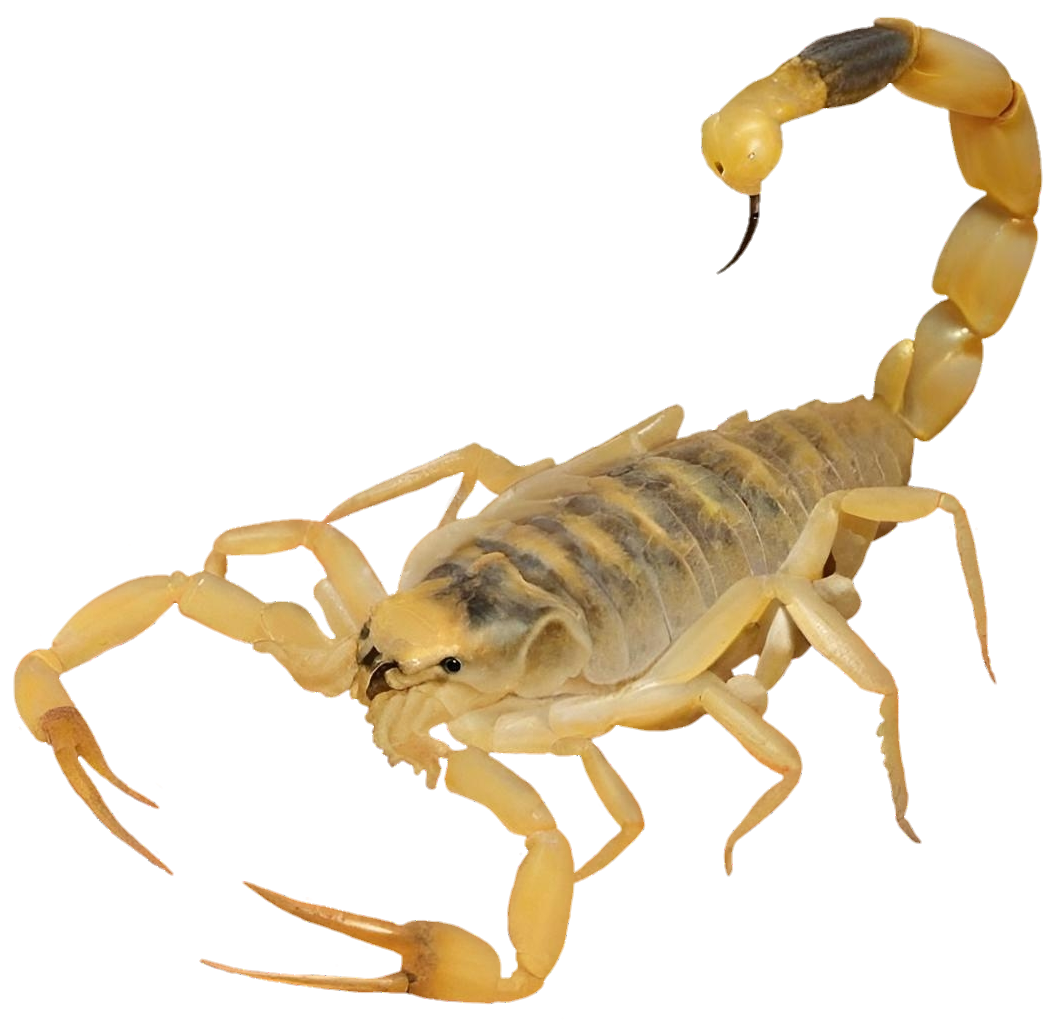
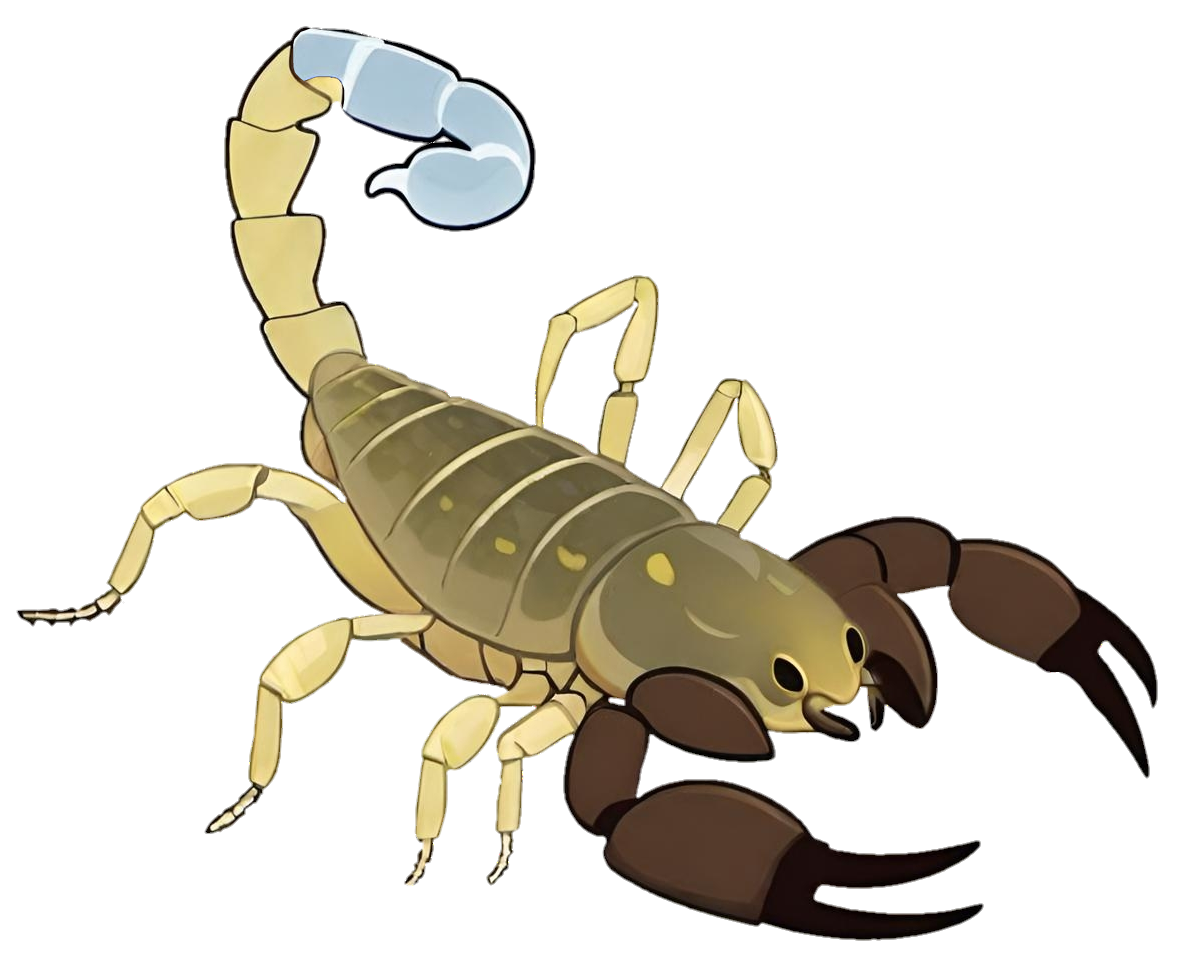
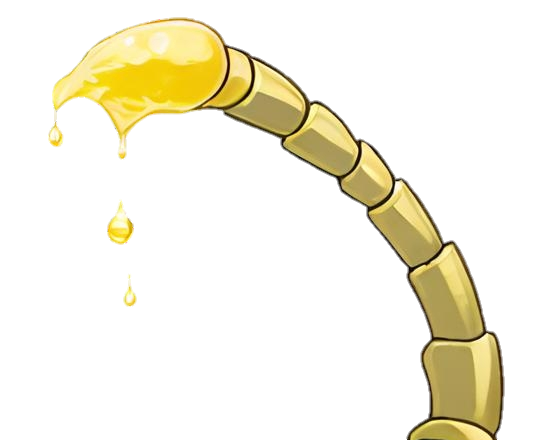
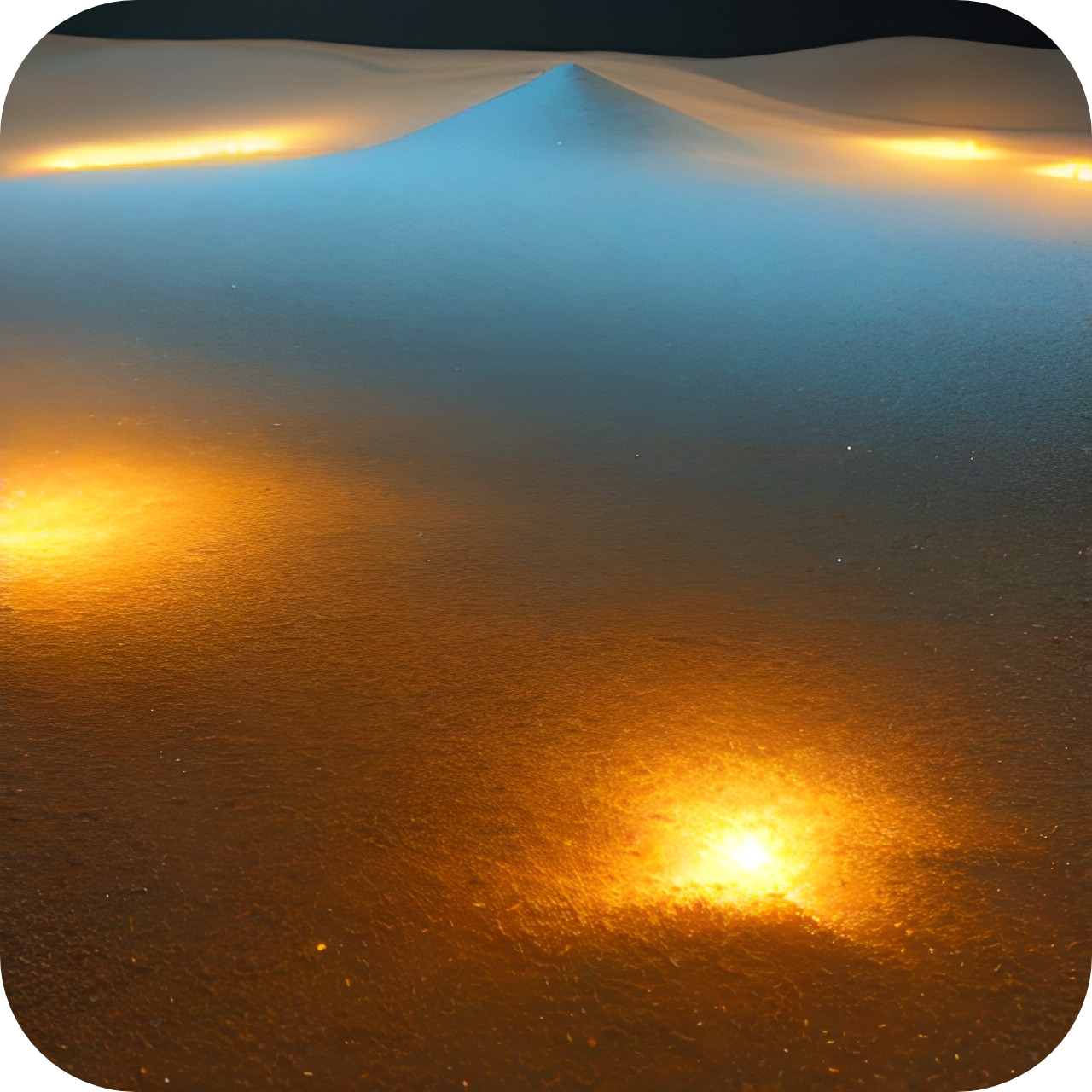
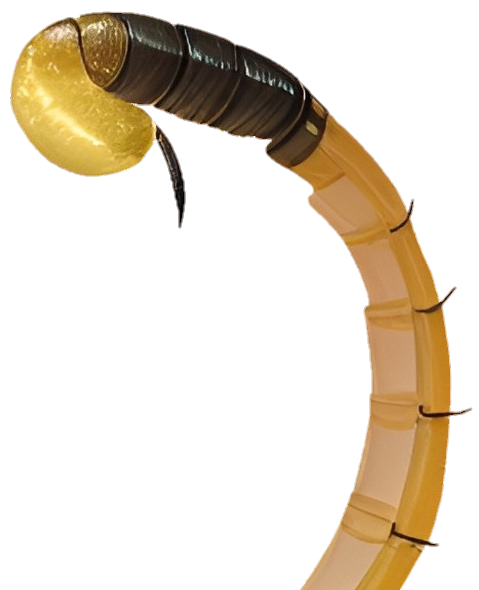
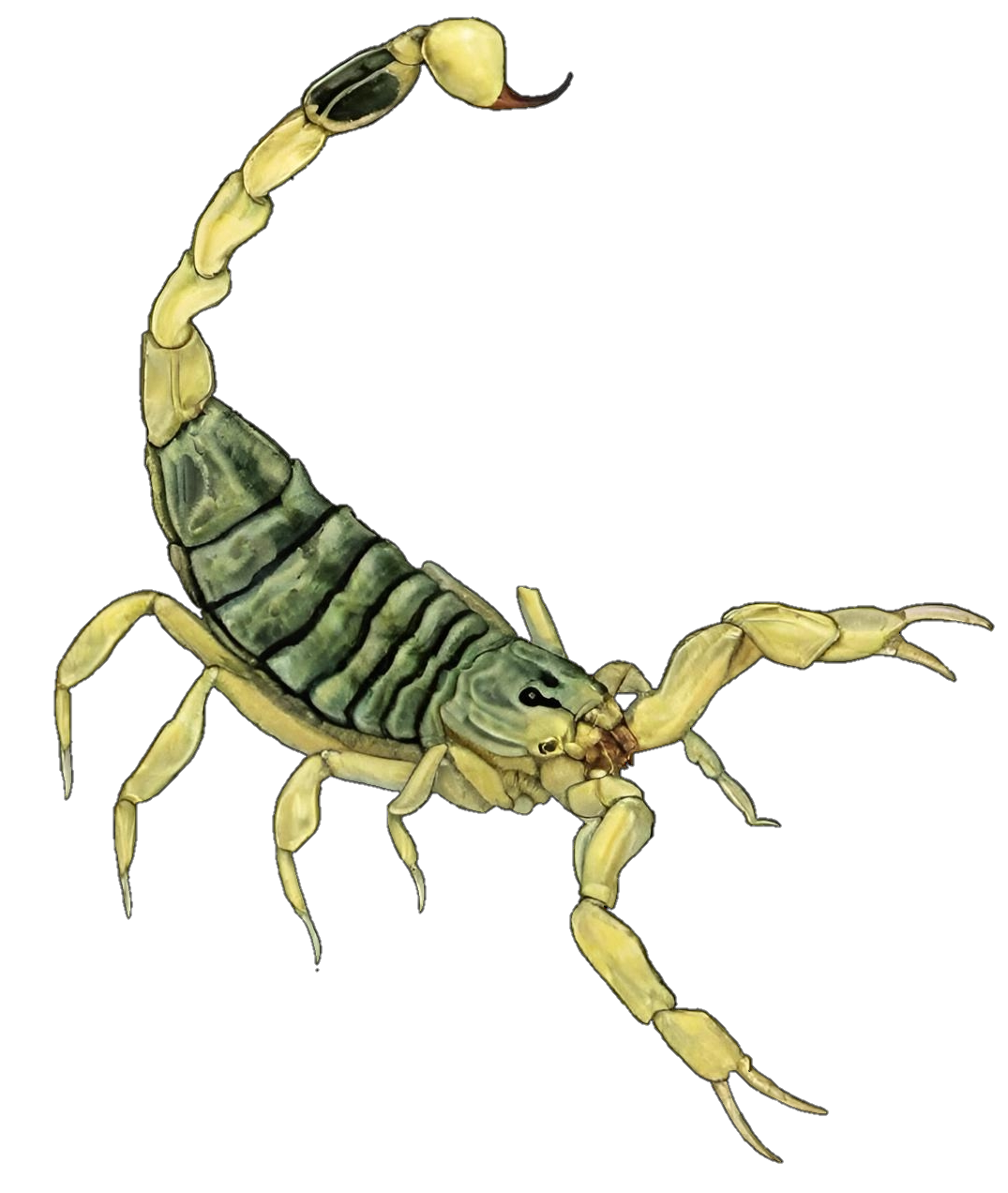

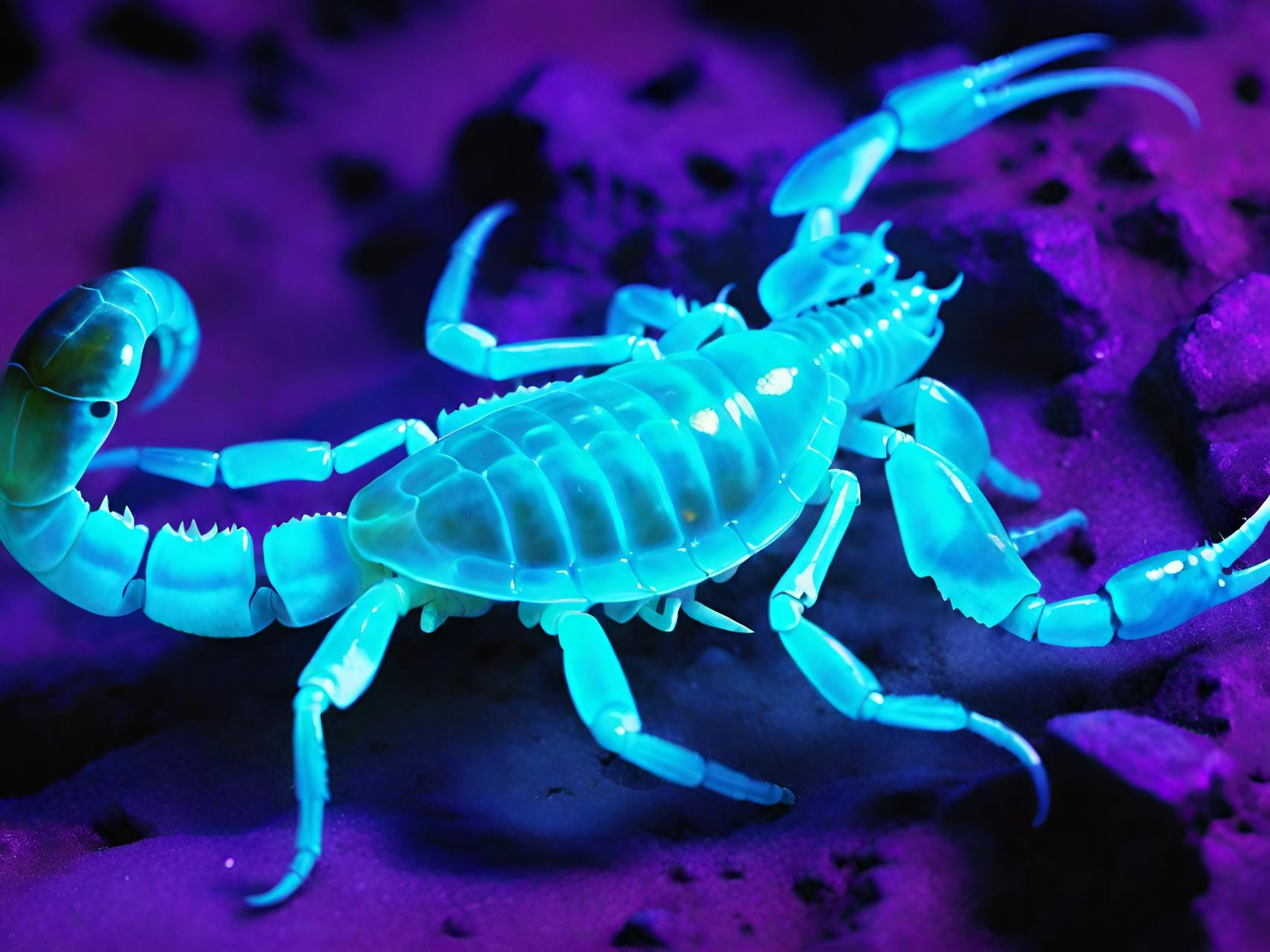

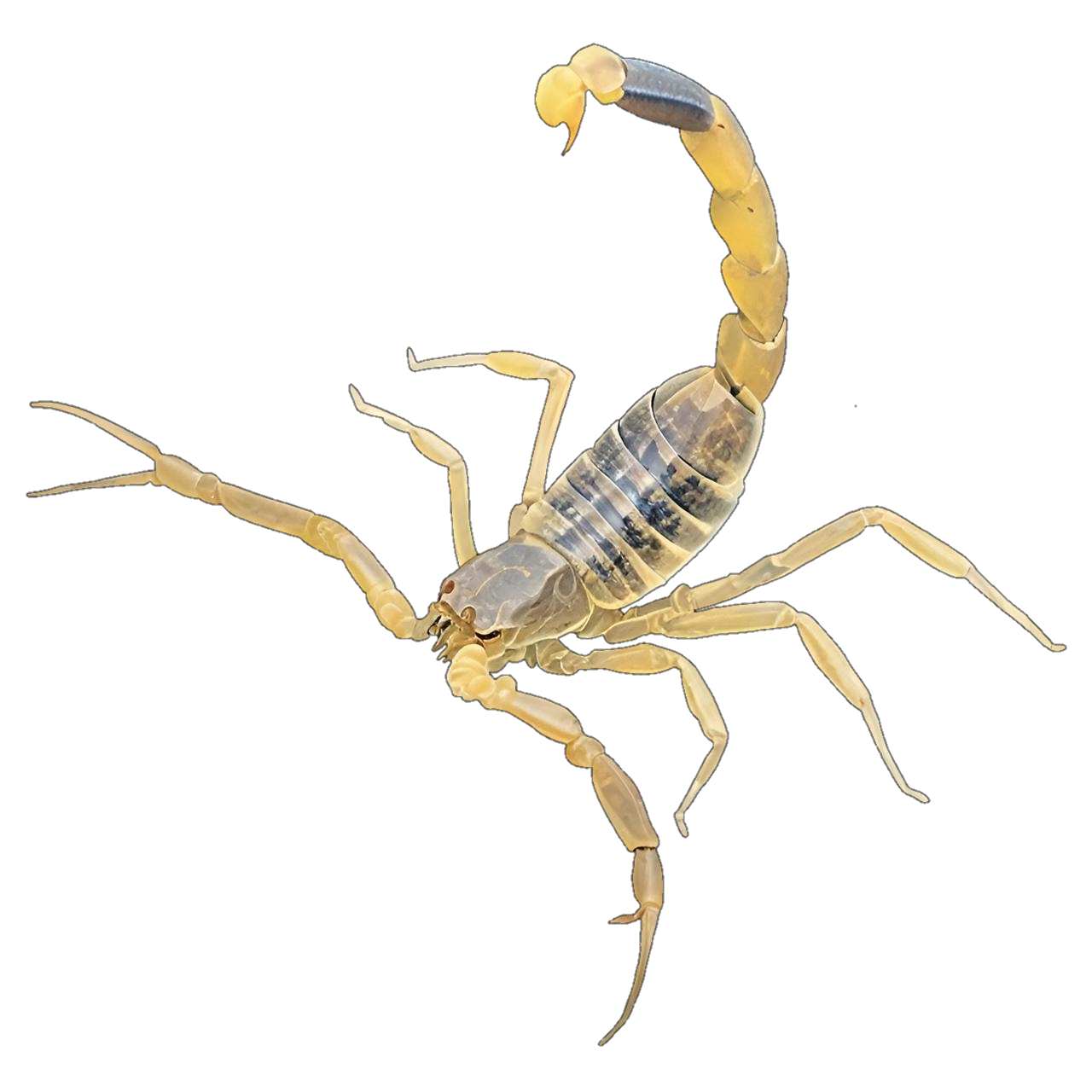


Comments